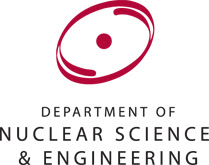Nuclear Reactors 552 - MIT Researchers Find That Thin Layer Of Aluminum Oxide Forms Self-Healing Coating For Nuclear Fuel Rods
Nuclear power reactors are fueled with fuel rod assemblies. The fuel rods in the assemblies are long and thin. They are filled with pellets of enriched uranium or a mixture of uranium and plutonium. The rods are coated with an alloy of zirconium. There are problems with the coating currently used because, at high temperatures, the coating can allow flammable hydrogen gas to escape and might cause explosions. There is a great deal of research into better coatings for fuel rods.
Most metals other than gold will oxidize when exposed to air and water. This process results in rust on an iron surface, tarnish on a silver surface and verdigris on copper and brass surfaces. This process can contribute to a category of failure referred to as stress corrosion cracking. There are three elements that form an oxide that can prevent any further oxidation: aluminum oxide, chromium oxide, and silicon dioxide.
A team of researchers from the Massachusetts Institute of Technology (MIT) led by graduate student Yang Yang just published a paper this week that describes their work with thin layers of solid aluminum oxide coating on metals. These layers of oxide can deform like a liquid which allows them to fill in cracks and gaps that may form in the metal surface they coat. The researchers say that one of the most important potentials uses for the new solid oxide coats is in the coating of nuclear fuel rods. The new coating could prevent the escape of hydrogen gas molecules as the fuel rods age.
The team examined metals coated with solid layers of aluminum oxide, chromium oxide and silicon dioxide with an environmental transmission electron microscope. The microscope allowed the team to examine metal surfaces exposed to gases and liquids such as oxygen and water. They found that these oxides coatings can prevent further oxidation to the surface of the metal.
Only the aluminum oxide flowed like a liquid at room temperatures. In order to flow, the layer of aluminum oxide has to be just two or three billionths of a meter thick. The researchers found that the aluminum oxide coating could be stretched to more than double its original length while still preventing cracks to open in the metal surface. When this coating is present, the typical corrosion process in absent.
The press release from the MIT team said, “Even with a solid protective layer, cracks can form that allow the oxygen to penetrate to the bare metal surface, where it can then penetrate into interfaces between the metal grains that make up a bulk metal material, causing further corrosion that can penetrate deeper and lead to structural failure.” However, the thin aluminum oxide coating “…is almost as deformable as a comparably thin layer of aluminum metal — a layer much thinner than aluminum foil. When the aluminum oxide is coated onto a surface of a bulk piece of aluminum, the liquid-like flow keeps the aluminum covered with its protective layer."
MIT NSE logo:
